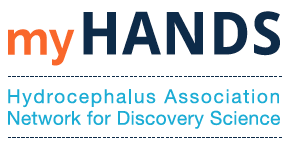Symptoms of Cerebrospinal Shunt Malfunction in Young Children: A National Caregiver Survey
By Rebecca Dorner, MD, MHS
A substantial number of children with shunts will experience a shunt malfunction in infancy or
early childhood. Importantly, young children cannot reliably self-report symptoms of
malfunction, leaving caregivers with full responsibility for detecting possible failure.
Additionally, early childhood is characterized by constant developmental changes, evolving
baseline behaviors related to sleep, eating, and activity, and frequent minor infections, illnesses
and injuries. Despite the unique challenges of detecting shunt malfunction in this context, data
focused on this population are limited to studies performed two decades ago. Importantly,
there is also a lack of detailed data from families, even though families are the first line
adjudicators of whether a child is experiencing a symptom of concern.
This study aimed to characterize the signs and symptoms of shunt malfunction in children ≤5
years old and the caregiver experience of identifying and seeking care for shunt malfunction.
English-speaking caregivers of children ≤5 years of age were recruited in collaboration with the
Hydrocephalus Association. An anonymous cross-sectional survey developed by content experts
was offered over various Hydrocephalus Association platforms. 228 complete caregiver
responses were analyzed, representing 228 children.
Vomiting, irritability, and sleeping more than usual were the most common symptoms of initial
and subsequent shunt malfunction for children ≤ 5 years old in our cohort. These same signs
were also the most prevalent in subsequent malfunctions and were the most common triggers
of evaluations that revealed no shunt malfunction (“false alarms”). In this cohort 15% of shunt
malfunctions reportedly presented with “other” symptoms; “not acting him/herself” was the
most common “other” sign. In addition, 14% of shunt malfunctions among infants and young
children in our cohort were reported to present with a single sign or symptom. Approximately
half of caregivers reported that their infant or young child had signs and/or symptoms that they
had not been counseled about previously.
This national sample also confirms that neurosurgeons are doing the bulk of family counseling
and preparation for shunt malfunctions. The caregivers that received the most counseling felt
the most prepared. However, the majority (85%) of this well-educated cohort still found it
difficult to distinguish young childhood development or minor illnesses from a shunt
malfunction and Caregivers commonly reached out to other families (33%) and nonclinical
resources (69%) to learn about shunt malfunction. A minority felt that detecting malfunctions
got easier over time; many felt it got more difficult as the fontanelle closed.
Future interventions should leverage this data to reinforce education of families of young
children with shunts and catalyze further investigations into the specific malfunction
presentations of this cohort.

